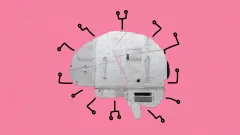Kids to more math at their level, teachers do less work to make it happen.
Community Review for DreamBox Learning Math
My Take
I love that it is 100% adaptive and gives students what they need when they need it. I like that it is grade band agnostic so kids can be working on several grade levels at one time in different strands. The learning environment being the same for students regardless of the math level is nice, too. Although I do think they should force change students into the new environment when they change grades rather than having the change reflect the math level - 3rd graders are smart and it will take them 5 minutes to notice who still has the K-2 fairies/pirates! I don't like that students don't have access to their own progress but can only see number of lessons completed. I'd also like for students to be able to toggle between Spanish and English on their own rather than relying on the teacher to change the settings.
This is the most engaging and visually interesting adaptive math product I've worked with. It emphasizes productive struggle and shows math visually in ways it's hard to do as a teacher on a white board. We have data in our district showing that if students consistently complete the recommended amount of lessons they will make gains (more than their peers who did not use DB) on the standardized tests.
How I Use It
Small groups of students use this during math workshop at the elementary level - rotating between teacher small group lesson, paper/pencil tasks, and Dreambox.
In the upper grades, this is a homework component where I can be confident students are working on math at the correct level which fills gaps or allows for advanced work - all without my making any extra copies or answer keys!





